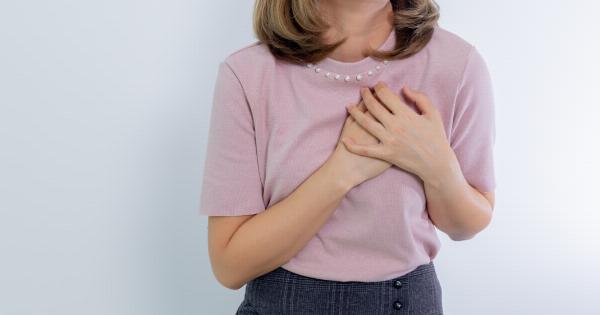Chest pain can occur for a number of reasons, ranging from anxiety and stress to gastroesophageal reflux disease (GERD) and heart conditions.
While many people experience chest pain at some point in their lives, it is essential to understand the signs and symptoms that indicate cardiac chest pain, as it can be life-threatening if left untreated. In this article, we will explore the different signs and symptoms of cardiac chest pain and what can cause it.
What is cardiac chest pain?
Cardiac chest pain is a type of chest pain that can indicate an underlying heart condition. It often presents as pressure, tightness, or discomfort in the chest but can also radiate to the arms, neck, or back.
Unlike other types of chest pain, cardiac chest pain usually occurs during exertion or physical activity and subsides with rest.
What causes cardiac chest pain?
Cardiac chest pain occurs when the heart does not receive sufficient oxygen. This can happen due to blockages in the arteries that supply the heart with blood or due to other conditions that affect the heart’s function.
Some of the most common causes of cardiac chest pain include:.
- Coronary artery disease
- Angina
- Heart attack
- Heart valve disease
- Hypertrophic cardiomyopathy
- Pericarditis
- Aortic dissection
Signs and Symptoms of Cardiac Chest Pain
The signs and symptoms of cardiac chest pain can vary depending on the underlying condition causing it. However, some of the most common signs and symptoms include:.
- Pressure or tightness in the chest
- Shortness of breath
- Nausea or vomiting
- Sweating
- Lightheadedness or dizziness
- Pain in the arms, neck, jaw, shoulder, or back
- Irregular heartbeat
When to seek medical attention
Cardiac chest pain requires immediate medical attention. If you experience any of the signs or symptoms mentioned above, call 911 or your local emergency services right away.
Early treatment can help prevent serious complications, such as heart attack or stroke.
Diagnosis and Treatment
Diagnosis of cardiac chest pain typically involves a physical exam, a review of the patient’s medical history, and medical tests that can help identify the underlying cause. These tests may include:.
- Electrocardiogram (ECG)
- Blood tests
- Echocardiogram
- Stress test
- Cardiac catheterization
The treatment of cardiac chest pain varies depending on the underlying cause and may include lifestyle changes, medication, or surgical procedures. Some of the most common treatments for cardiac chest pain include:.
- Medications to manage symptoms, such as nitroglycerin or beta-blockers
- Lifestyle changes, such as quitting smoking, eating a healthy diet, and exercising regularly
- Angioplasty or stenting to open narrowed or blocked arteries
- Coronary artery bypass surgery
- Valve replacement surgery
Prevention
Preventing cardiac chest pain involves making lifestyle changes that reduce the risk of heart disease. Some of the most effective lifestyle changes include:.
- Quitting smoking
- Maintaining a healthy weight
- Eating a healthy diet that is low in saturated and trans fats, salt, and added sugars
- Exercising regularly
- Managing stress through relaxation techniques, such as meditation or yoga
- Limiting alcohol consumption
Conclusion
Cardiac chest pain is a serious condition that requires immediate medical attention.
Understanding the signs and symptoms of cardiac chest pain and getting early diagnosis and treatment can help prevent serious complications, such as heart attack or stroke. By making lifestyle changes and seeking medical attention when necessary, it is possible to reduce the risk of cardiac chest pain and improve heart health.




























